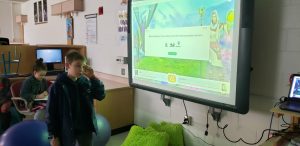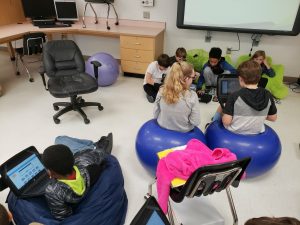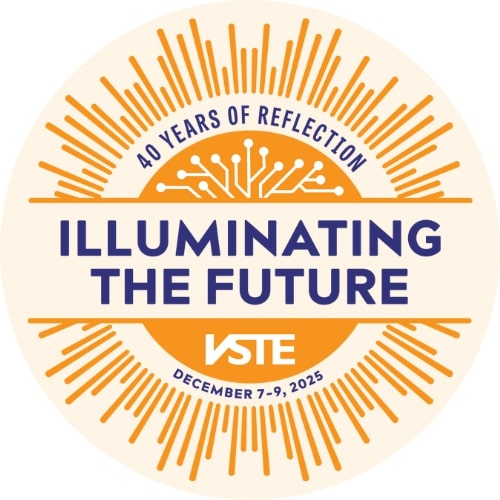![]() As schools close for what may be an extended length of time, many of us are entering the new and unfamiliar experience of working with our students in an online environment. While we can’t anticipate every issue you might face, VSTE has some basic recommendations gathered from some experts in this area. We hope these will help you with the adjustment.
As schools close for what may be an extended length of time, many of us are entering the new and unfamiliar experience of working with our students in an online environment. While we can’t anticipate every issue you might face, VSTE has some basic recommendations gathered from some experts in this area. We hope these will help you with the adjustment.
- Use the tools you already have.
Many school divisions already have arrangements to use distance learning tools like Google G Suite for Education, Microsoft Office 365, BlackBoard, and Schoology. Not only have these products been vetted by your division for student privacy and data security, you likely have someone assigned to your school, such as your ITRT or other technology coach, who can help you with problems. Familiarity will help both you and your students feel more comfortable as you move into an online environment.
- Avoid registering for new and unfamiliar products.
In response to this crisis, many technology companies are offering free or discounted versions of their products to teachers and schools. While these are generous offers, it is likely that these apps will create educational records (essentially any personally identifiable data). Schools must follow FERPA when sharing educational records with a third party, regardless of the age of the student, and regardless of if it is the student or the teacher is the one signing in. These tools may also have provisions in their terms of service that violate the intellectual property rights of your students. Your school division has already negotiated contracts with many online products. Check with your ITRT or tech coach to confirm which products are available and how to use them with your students. DO NOT create accounts for your students or staff without first checking to see if the product has been approved as you do not want to risk your students' privacy. (The Department of Education has more guidance about FERPA and COVID-19 here.)
- Remember that not all of your students may have the same access at home.
Even in the more affluent areas of Virginia, we have students whose parents cannot afford high-speed internet access and who may be relying on public access that could become unavailable. In other areas, connection speeds could be slow or unreliable. If cable is available, check to see of the company is one that is offering free broadband to low income households right now. You may be able to help your students and their families get online during this crucial time. Some phone providers have lifted data caps and overage fees as well. However, keep the varying level of access in mind as you plan for the activities you may want them to complete during this time. For example, some students may not be able to join if you try to have video conferencing sessions. Asynchronous activities or recordings can help ensure access. Students will also be using a variety of devices for online access that will impact their ability to use tools. Best advice: keep it simple.
- Work first on building your students’ online skills.
We all know that kids are great at communicating with each other using their personal devices. Those skills don’t transfer directly into learning in an online environment. As you get started, emphasize extending the community you’ve built in the face-to-face classroom to the new virtual classroom. Think of this as an opportunity for students to improve their digital learning skills. Start simple with discussion boards, comments, or quick postings. Progress to more advanced online activities.
- Practice safe and secure networking.
Don’t share passwords, especially not through email or chat. Your division will provide guidance on how to reset your own and student passwords. Follow their directions even if it takes longer in a completely online environment. Ask your tech support person about division policies regarding sharing student passwords with parents. You should not allow others to use your division-owned device and make every effort to separate your work and personal data, preferably with different profiles. You should not use a VPN for personal Internet access or sync division content to personal cloud storage such as Dropbox or Google Drive.
- Connect with your colleagues.
Although it will be temporary, the time you will be teaching online can be a great learning experience for you as well. Share what you discover with other educators from your division, around Virginia, and beyond, and learn from them. Twitter is a good place to start a discussion (just don't put your students on Twitter). You'll also find many teachers who blog about their work.
VSTE is here to help you get started: you can follow us on Twitter, check our Facebook page, join our Facebook Group and browse the resources at Virginia's #GoOpenVA site. We are also partnering with UnisonEDU to offer free online coaching and support. Learn more here.










